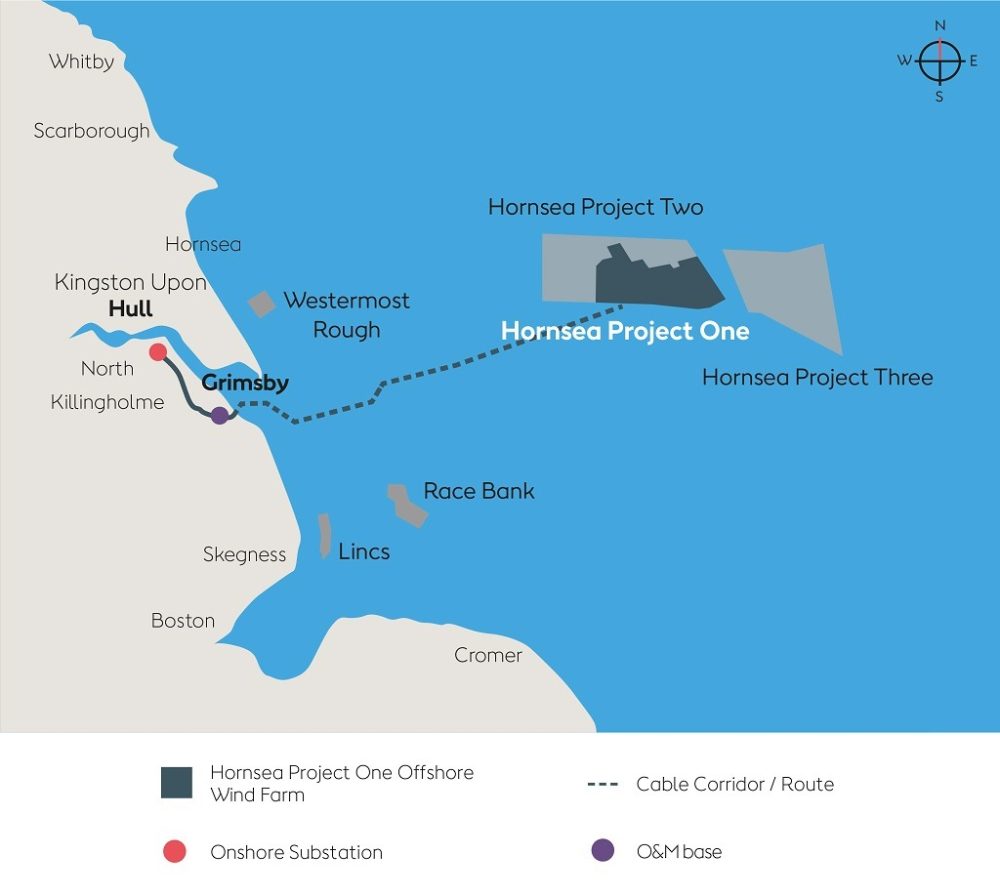
The pressure to clean up the energy mix has seen offshore wind farms increase in popularity over the past few years, with the UK home to a number of the world’s largest sites.
This comes as the appetite amongst investors is increasing for renewables as prices continue to fall – meaning they can be a safer long-term investment compared to other forms of energy.
The UK, which has about 35% of the global wind capacity installed, is already home to seven of the world’s 10 biggest sites, with its Dogger Bank project in the North Sea set to become the largest of its type.
Here, NS Energy looks into how the UK has scaled up on the technology and lists the country’s five biggest offshore wind projects.
Why the number of offshore wind farms has increased in the UK
The British government committed to reaching net zero on greenhouse gas emissions by 2050 last year and offshore wind is a key component of its strategy to achieving its climate goals.
RenewableUK director of strategic communications Luke Clark said offshore wind has become a “major success story for the UK” because it has the “best offshore wind speeds in Europe and vast areas of shallow sea bed that makes it easy to install offshore turbines”.
“We scaled up faster than any other country thanks to consistently supportive policies from the government and a determination on the part of this industry to innovate and drive down costs rapidly,” he added.
“As a result, the UK has the biggest offshore wind farms in the world, the most powerful turbines, and the most innovative technology – the first floating offshore wind farm in the world was built here.
“We’ve installed more capacity than any other country – 8.5 gigawatts (GW), which powers more than 7.5 million British homes all year round.
“The government wants us to more than quadruple capacity by 2030, by which time offshore wind will be generating more than one-third of the UK’s entire annual electricity needs.
“Offshore wind is set to become the backbone of the UK’s modern clean energy system and we’ll maintain our global lead in this technology for years to come.”
The five biggest wind farms in the UK
Dogger Bank
The Dogger Bank project is located in the North Sea, 130km off the Yorkshire coast in England.
It will comprise three 1.2GW offshore wind farms – ensuring it is comfortably the biggest wind farm of its kind.
The project is a joint venture between Irish clean energy developer SSE Renewables and Norweigan energy supplier Equinor.
The total investment for the facility is reported to be about $11bn, with the three wind farms capable of generating enough power for 4.5 million UK homes, while meeting about 5% of the country’s total electricity demand.
Each of the site’s mega-turbines will reach 220m in height and provide enough power for 16,000 homes.
Onshore construction started in January, with the offshore work to commence in 2021, and the first power from the project expected in 2023.
Hornsea One
The Hornsea One project, which will become the largest facility of its type until Dogger Bank begins production, is located 120km off the Yorkshire coastline near Hull.
Danish clean energy firm Orsted began construction of the site in January 2018 and it is set to be completed this year.

The facility will feature the world’s longest powerline cable route at 900km, spanning an area five times the size of Hull.
With a capacity of more than 1.2GW, the wind farm will provide enough energy to power more than one million homes.
It will consist of 174 turbines, each 164m wide and 190m tall.
Walney Extension
The Walney Extension offshore wind farm is based 19km off the Walney Island coast in Cumbria, England.
It is part of the Walney offshore wind farm project, which includes the Walney I and Walney II wind farms.
The 659MW facility is co-owned by Orsted and Danish pension funds PFA and PKA, with up to $3bn invested in the project.
Construction of the extension started in August 2015 and the first power was achieved from the site in September 2017, before becoming fully operational in September 2018.
It was installed with 87 wind turbines and has an operational life of 25 years – providing power to about 600,000 British homes.
London Array
London Array is based in the south-east of England, about 15km from the Kent and Essex coasts in the outer Thames Estuary.
The 630MW wind farm cost $3.5bn and was developed by the London Array Limited consortium – which was originally composed of British-Dutch oil major Shell, power supplier E.ON and Orsted.
But Shell pulled out of the project to be replaced by Abu Dhabi’s state-owned clean energy firm Masdar.
Construction of the wind farm began in July 2009, with the first power produced in October 2012 and all 175 turbines installed by December 2012.
Beatrice
The Beatrice offshore wind farm is a 588MW project located about 13.5km off the coast of Caithness in Scotland.
It was developed by Beatrice Offshore Windfarm Limited, a consortium company made up of Scottish and Southern Energy, Danish investment firm Copenhagen Infrastructure Partners and Edinburgh-based green energy supplier Red Rock Power.
The project was approved by the Scottish government in March 2014, with onshore construction works starting in October 2016, while offshore work began in April 2017.
The first wind turbine was installed in July 2018, with the last of the 84 turbines in place by May 2019.
The $3.4bn required for the wind farm made it one of the biggest-ever private investments put into Scottish infrastructure.
Over its 25-year operational life, the 588MW wind farm is expected to power about 450,000 Scottish homes.


